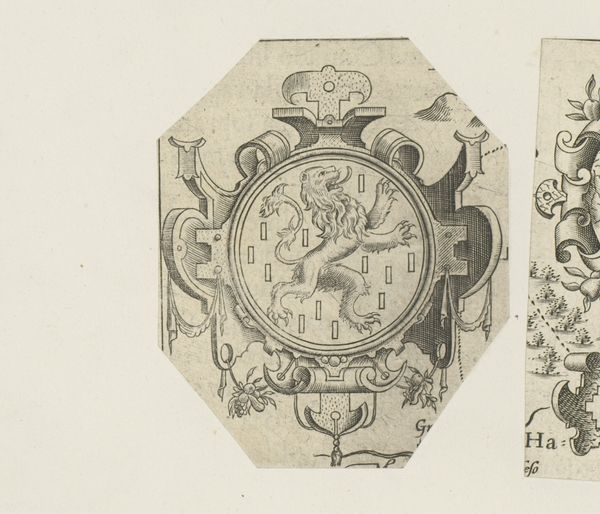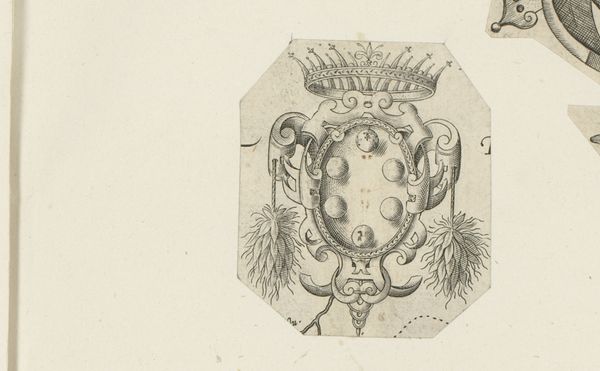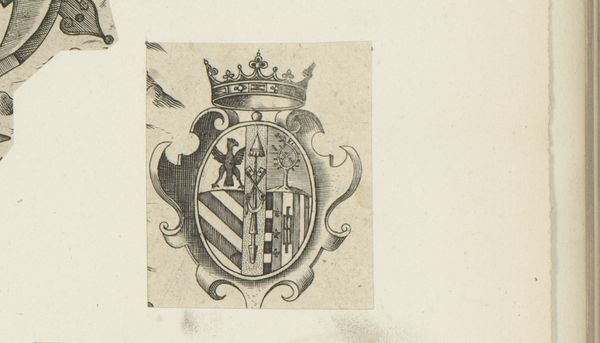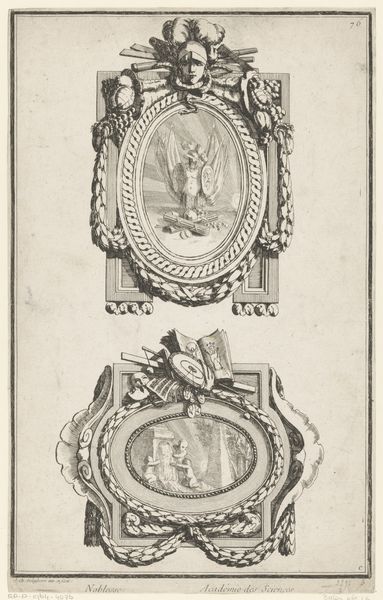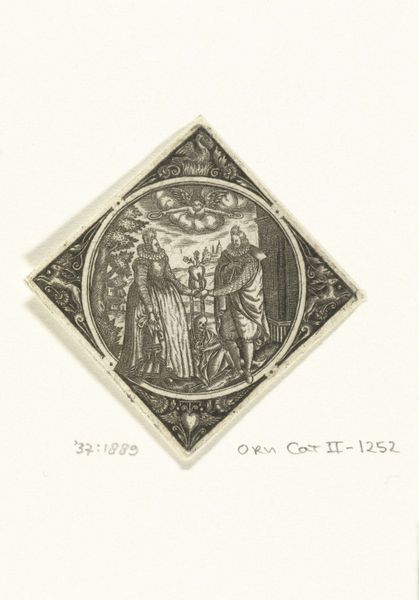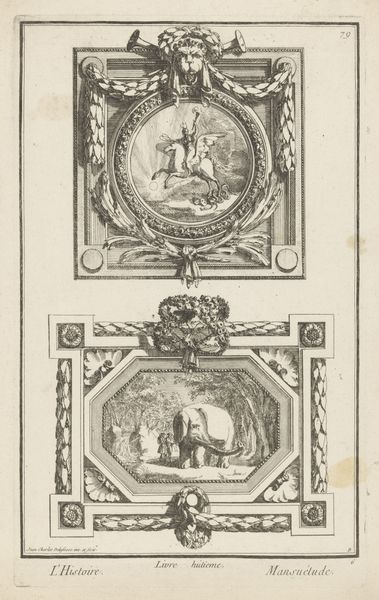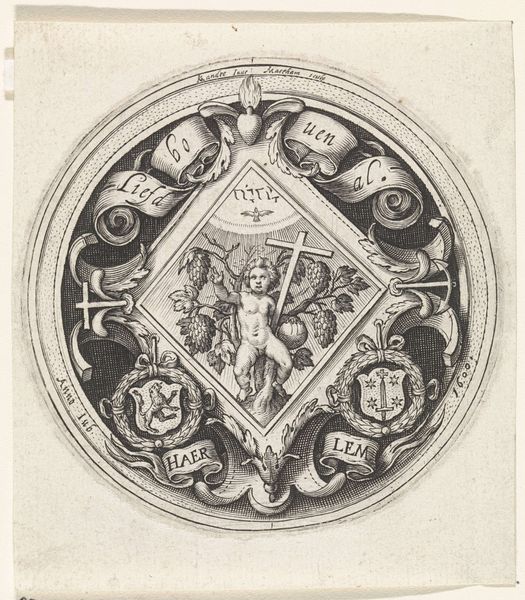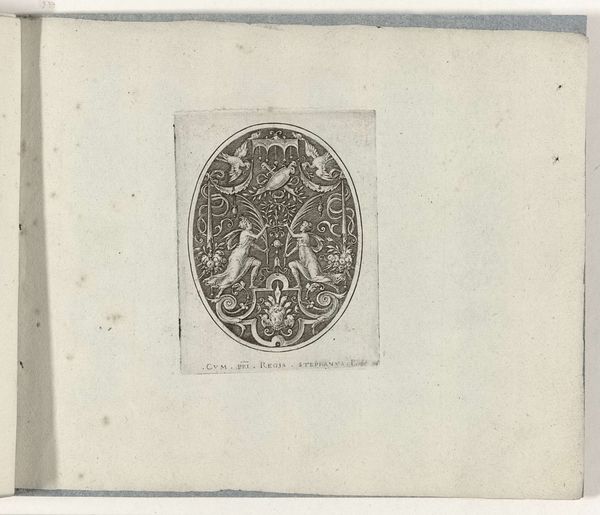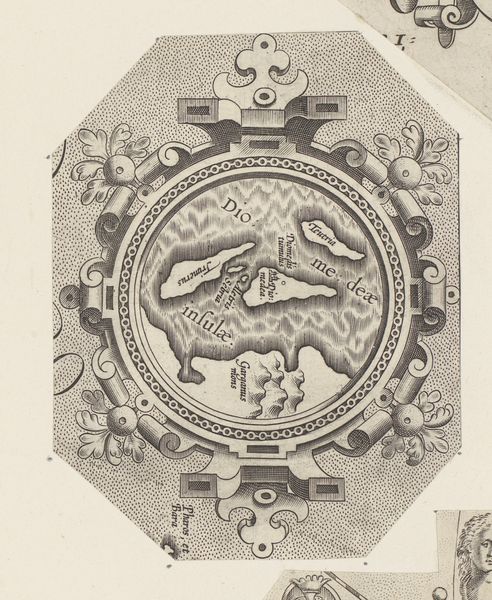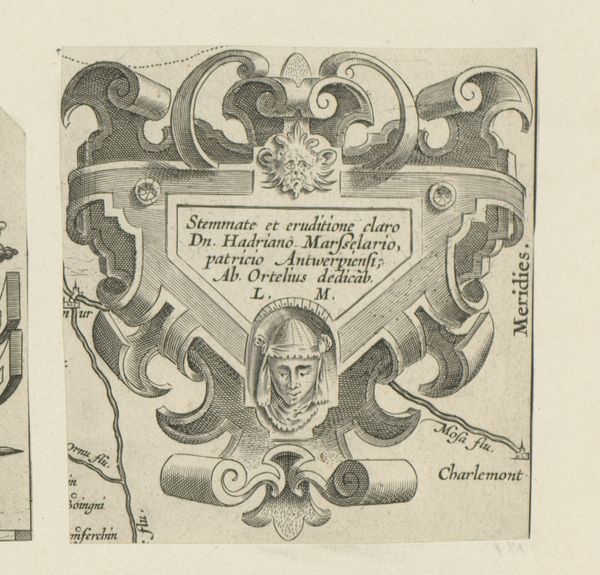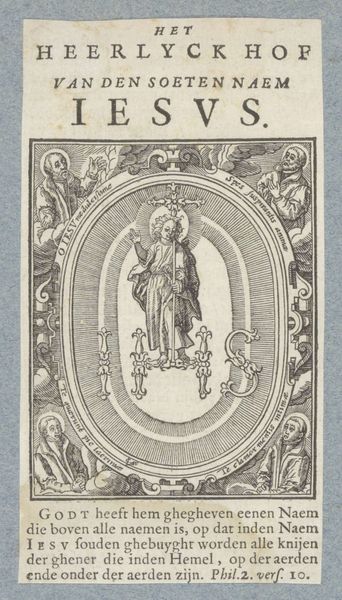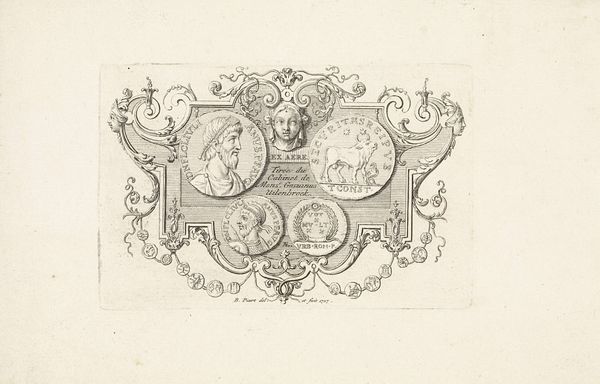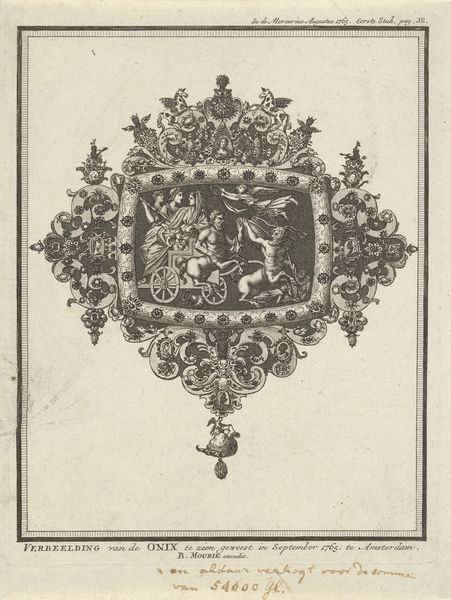
drawing, print, engraving
#
portrait
#
drawing
# print
#
classical-realism
#
11_renaissance
#
history-painting
#
italian-renaissance
#
engraving
Dimensions: height 93 mm, width 89 mm
Copyright: Rijks Museum: Open Domain
Curator: Let's turn our attention to this engraving, "Ronde cartouche met het portret van Romulus," created around 1579-1580. Editor: It’s striking how detailed this small print is! There is a lot going on for what feels like a modest, framed portrait. It gives the figure an iconic almost ethereal feel. Curator: Indeed! This round cartouche, or ornamental frame, centers on a portrait of Romulus, the legendary founder of Rome. Considering the time period and the engraving process, what is the level of craftsmanship we're seeing here, really saying about its initial audience and consumption? Editor: Exactly. The idealization of Romulus ties directly to Renaissance humanism and its reverence for classical antiquity. In the late 16th century, creating images served powerful political needs. I would argue this wasn't merely aesthetic but also a form of cultural propaganda! It speaks volumes about power, mythology, and even self-fashioning through constructed historical narratives. Curator: Absolutely, the printing and circulation of images like this contributed to the construction of a shared cultural memory, disseminated across social strata and impacting artistic labor itself! Can you tell me more? Editor: Note how Romulus is adorned with a laurel wreath, a symbol of victory and leadership. This signifies authority while, subtly referencing ideals of male virility during a time when consolidating power was an explicit practice in most governments across Europe. Curator: Precisely. Moreover, the very act of creating this print involved collaborative efforts, from the artist to the engraver to the printer. We also have to recognize it as an object intended for purchase. Did people buy it, for example, to publicly broadcast allegiance, to self-educate, or for completely other purposes that reflected contemporary trends of production and value? Editor: It pushes us to interrogate those broader power structures in Rome. It encourages discourse that links the aesthetic and the historical, creating a larger, more thoughtful and thorough experience. Curator: Thinking through its means of production and consumption gives this object even more impact, offering layers of socio-political texture! Editor: Precisely. It reminds us how interwoven narratives truly are in even the smallest artifacts.
Comments
No comments
Be the first to comment and join the conversation on the ultimate creative platform.
